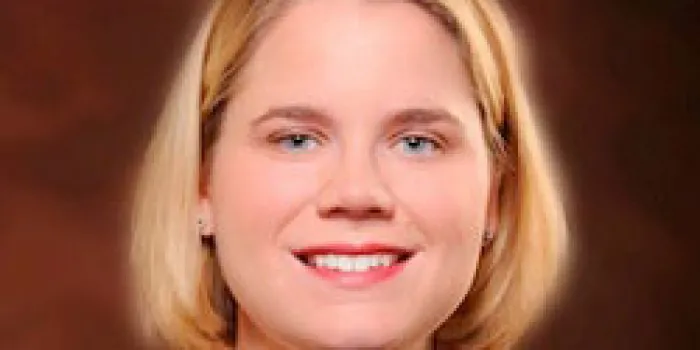HemAware is conducting a series of interviews with recipients of the NHF-Shire Clinical Fellowship. It is funded through the generous support of Shire. The objective of this grant is to increase the number of skilled clinicians committed to providing comprehensive care for individuals with bleeding disorders and to prepare recipients for academic careers.
This interview was conducted with Mindy Simpson, MD, assistant professor of pediatrics in the Department of Pediatrics, Section of Pediatric Hematology/Oncology at Rush University Medical Center in Chicago. The fellowship was funded from 2008 to 2010.
Why did you decide to study medicine?
Simpson describes herself as a “people person” who was always interested in science. Volunteer work during her high school years in Pittsburgh helped solidify her career path. “I got some exposure to working in hospitals and seeing what it was like,” she says. “I found it very interesting.”
What initially attracted you to hematology?
During her first and second years of medical school at Temple University in Philadelphia, Simpson found an open research position funded by the American Society of Hematology (ASH) in a basic science hematology lab. She worked with Robert W. Colman, MD. The more she learned, the more she found the field fascinating. “Hematology is one of those things that’s very much like a puzzle to me,” says Simpson. “I was always a puzzle person.”
How did the training and mentorship you received as an NHF-Shire Clinical Fellow affect your decision to pursue clinical care and/or research in bleeding disorders?
“The opportunity that the NHF-Shire award gave me was really clear, dedicated time during my fellowship to be able to focus on learning about coagulation.” Simpson describes Marilyn Manco-Johnson, MD, director of the hemophilia treatment center at the University of Colorado in Aurora, as a “fantastic mentor.” During her two years there, Simpson started work on global assays, which measure clot formation and breakdown. She developed a simultaneous thrombin and plasmin generation assay, and her work was published in Thrombosis Research. She also observed role models for what she is doing now at Rush. “I was exposed to people who were able to make it work, doing good clinical care and good research.”
Are you still engaged in the clinical aspects of patient care or bleeding disorders research? In what aspect of care are you most interested?
Simpson divides her time between clinical care of pediatric patients and research. She sees the value in each. “I love clinical medicine, so I will never leave the patient part of it. But the research aspect has to take such a large role in what we’re doing because there’s still so much to improve on.” Translational research, based on patient concerns and questions, drives Simpson’s lab work to provide answers, explanations and improvements.
Simpson believes that the research she and others are conducting using global assays may help explain the variability in bleeding between patients with identical diagnoses and factor levels. “These global assays are trying to look at the process of clot formation and clot breakdown,” she says. “We are trying to find what is somebody’s individual ability to make a clot and have that clot break down.” Using the assays to measure levels of different proteins in the blood and thrombin, which helps build a clot, could provide more answers. “We’re trying to improve upon how we define who’s going to bleed more and who’s going to bleed less, who needs more treatment and who needs less,” Simpson says.
Did your NHF-Shire Clinical Fellowship assist in advancing your own position at your institution? Or did it serve as a building block to further your career in coagulation?
The fellowship was a building block for Simpson’s career. “Without it, I probably wouldn’t be where I am today.”
Where do you think bleeding disorders research and clinical care may be headed in the near future? In the next decade?
In the short term, Simpson says trials of longer-acting factor products are popular among patients. “Here in my world of clinical research, that’s where we are enrolling our patients. They all want to be able to infuse less often, but have good effects.”
Down the line, Simpson is banking on global assays to personalize medicine. “We’re hoping to individualize the treatment options and the decision-making for what’s best for each patient.”
When you are not working, how do you relax or escape from your work?
When Simpson is away from patients and the lab, she is completely focused on spending time with her husband and her son, Brian. “We are doing fun things like exploring the city in ways that I haven’t before,” because of the baby, she says. “We went to the zoo last weekend.”
A hobby Simpson started when she was in medical residency lures her when the weather is nice in Chicago—sailing. “I did not grow up sailing, but I do enjoy it. That’s my way of enjoying Lake Michigan without having to swim in it,” she says with a laugh.

